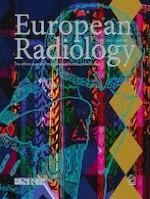Published in:

08-04-2022 | Breast Cancer | Breast
Chemotherapy-associated steatohepatitis was concomitant with epicardial adipose tissue volume increasing in breast cancer patients who received neoadjuvant chemotherapy
Authors:
Xiaoxia Wang, Yuchuan Tan, Daihong Liu, Hesong Shen, Yongchun Deng, Yong Tan, Lei Wang, Yipeng Zhang, Xin Ma, Xiaohua Zeng, Jiuquan Zhang
Published in:
European Radiology
|
Issue 7/2022
Login to get access
Abstract
Objectives
To investigate the prevalence of chemotherapy-associated steatohepatitis, quantitate the epicardial adipose tissue (EAT) volume in breast cancer patients, and explore the mediating effect of liver fat content on EAT volume in breast cancer patients who received neoadjuvant chemotherapy (NAC).
Methods
From October 2018 to April 2020, patients were retrospectively reviewed and divided into breast cancer non-NAC and NAC groups. The prevalence of chemotherapy-associated steatohepatitis was evaluated through quantitative MRI mDIXON-Quant examinations by using defined proton density fat fraction cutoffs of liver fat. The EAT volume was quantified on chest CT by semi-automatic volume analysis software. Bootstrap analysis was used in the breast cancer NAC group to test the significance of the mediating effect of liver fat content on EAT volume.
Results
A total of 662 breast cancer patients (non-NAC group: 445 patients; NAC group: 217 patients) were included. The prevalence of chemotherapy-associated steatohepatitis in the NAC group was significantly higher than the prevalence of hepatic steatosis in the non-NAC group (42.8% vs. 33.3%, p < 0.001). EAT volume was measured in 561 of 662 breast cancer patients, and was significantly higher in the NAC group than in the non-NAC group (137.26 ± 53.48 mL vs. 125.14 ± 58.77 mL, p = 0.020). In the breast cancer NAC group, the indirect effect of liver fat content on EAT volume was 2.545 (p < 0.001), and the contribution rate to the effect was 69.1%.
Conclusions
EAT volume was significantly higher in the BC-NAC group than in the BC-non-NAC group.
Key Points
• The prevalence of CASH was as high as 42.8% in BC patients.
• NAC significantly increased the EAT volume in BC patients.
• The liver fat content caused the change of EAT volume through mediating effect.





